Looking to add a splash of color to your epoxy resin projects? You're not alone! Many crafters want to create vibrant, eye-catching pieces that stand out.
Whether you're making jewelry, coasters, or art, adding color to your resin opens up a world of creative possibilities.
To color epoxy resin, you can use special resin-specific colorants like mica powders, alcohol inks, or liquid pigments designed for this purpose. These materials mix well with the resin without affecting how it cures.
Stay away from food coloring or nail polish, as these won't work properly and might ruin your project.
The best part about coloring resin is that you can make it look however you want! You can create clear, see-through colors or solid, opaque shades.
You might want to try blending colors too. With the right colorants and a little practice, your resin projects will look amazing.
Best Colorants For Epoxy Resin
When working with epoxy resin, choosing the right colorant makes all the difference in your final project. The best colorants blend well without affecting the resin's curing properties or durability.
Liquid Dyes, Mica Powders, And Alcohol Inks
Liquid dyes made specifically for resin give you vibrant, translucent results. They're super easy to mix in and a little goes a long way! Just add a few drops and stir gently to avoid bubbles.
Mica powders are amazing for metallic and pearlescent effects. These fine, sparkly pigments create depth in your projects.
You can find them in craft stores or online where they're sold for cosmetics. For best results, mix the powder with a small amount of resin first before adding to your main mixture.
Alcohol inks offer bright, bold colors that create cool effects like cells and waves. They work great for jewelry and art pieces. These inks spread beautifully in resin, creating dreamy, fluid patterns.
Pro tip: Start with a tiny amount of any colorant. You can always add more, but you can't take it out once it's mixed!
Using Acrylic Paint In Epoxy Resin
Acrylic paint is a budget-friendly option for coloring epoxy. Use artist-quality acrylics rather than craft paints for better results. The paint should be thick and highly pigmented.
When using acrylics, follow these simple rules:
- Add no more than 10% paint to your resin mixture
- Mix thoroughly to avoid streaks
- Test on a small sample first
Too much acrylic paint can mess up how your resin cures. It might stay sticky or soft if you add too much. Some colors may fade over time when exposed to sunlight, especially reds and purples.
For opaque finishes, acrylics work really well. They're perfect for coating surfaces or creating solid-colored items. Many crafters keep a selection of acrylics on hand for quick and easy coloring.
What Not To Use When Coloring Resin
Not all colorants work with epoxy resin. Some can ruin your whole project!
Avoid food coloring completely - it won't mix properly and can prevent proper curing.
Nail polish is also a bad choice. While it might seem like a good idea because it comes in pretty colors, it contains solvents that react badly with resin. Your project might never fully harden.
Water-based products generally don't mix well with resin. They can create bubbles, cloudiness, or separation in your finished piece. Oil-based colorants can also cause problems with curing.
Cheap pigments without proper labeling might contain fillers that affect your resin. Always buy quality dry pigments and colorants made for resin or at least art-grade materials.
Remember to wear gloves when handling any epoxy pigments. Some colorants can stain your skin for days!
Step-By-Step Process To Dye Epoxy Resin

Dyeing epoxy resin is fun and simple when you follow the right steps. The key is using proper materials and techniques to get beautiful, consistent colors in your projects.
Mixing The Base Resin And Adding Colorants
Before you start, gather all your supplies. You'll need:
- Clear epoxy resin and hardener
- Colorants (liquid pigments, alcohol inks, or mica powders)
- Mixing cups and stir sticks
- Gloves and protective equipment
First, mix your resin and hardener according to the package instructions. Most resins use a 1:1 ratio, but always check your specific brand. Pour both parts into a clean mixing cup.
Don't add color until your base resin is thoroughly mixed! This is super important.
For best results, use resin-specific colorants rather than food coloring or nail polish, which can prevent proper curing.
Liquid pigments work easiest, but mica powders create gorgeous shimmery effects.
Start with a tiny amount of colorant - just a few drops of liquid or a small pinch of powder. You can always add more, but you can't take it out!
Proper Mixing Techniques For Even Color
Stir slowly and thoroughly when adding colorants. Fast stirring creates bubbles, which ruin the final look of your piece.
Use a flat stick and scrape the sides and bottom of your cup while mixing. This prevents unmixed resin or color from hiding along the edges. Mix for 3-5 minutes until the color looks completely uniform.
For powdered colorants like mica:
- Add a tiny amount to your mixed resin
- Stir gently in one direction
- Scrape sides frequently
- Continue until all powder particles are dissolved
If you notice clumps, try mixing a bit of powder with a drop of resin first to create a paste. Then add this paste to your main mixture for smoother blending.
Working With Multiple Colors In One Project
Creating multi-colored resin pieces adds wow-factor to your projects! You can try several approaches.
For layers: Pour one color and let it partially cure (about 30-60 minutes depending on your resin). Then pour the next color on top. This creates distinct layers without colors mixing together.
For swirls and patterns: Pour different colored resins side by side. Use a toothpick or stick to gently drag through colors, creating beautiful designs. Don't over-mix or you'll lose the pattern!
Try the "dirty pour" technique:
- Pour small amounts of differently colored resins into one cup
- Don't mix them together
- Pour this cup onto your project surface
- Watch amazing patterns form naturally
Remember that darker colors can easily overpower lighter ones. Use more of your light colors and just a touch of darker shades for balance.
Learn how to color your resin right by reading our guide: Coloring Resin: Techniques for Vibrant DIY Crafts
Getting The Right Color Intensity

The amount of colorant you add to epoxy resin affects both the look and strength of your final piece. Finding the perfect balance is key to creating beautiful, crystal clear projects.
How Much Dye To Add To Epoxy Resin
Start with just a tiny bit of colorant—about 5% of your total resin volume is usually plenty. Too much can stop your resin from curing properly and make it weak.
Try this test: Add a small drop of color to your mixed resin. Stir well with a clean stick. Check the color by letting a drop fall back into the mixture.
If it's too light, add more color bit by bit. Remember these tips:
- Powders: Start with 1/8 teaspoon per 8 oz of resin
- Liquid dyes: 4-6 drops per 8 oz for light colors
- Alcohol inks: 2-3 drops per 8 oz (these are super strong!)
Keep a record of how much you use. This helps you get the same color next time!
Creating Transparent Vs. Opaque Finishes
You can make your resin see-through or solid depending on what you add:
For transparent colors:
- Use alcohol inks or liquid resin dyes
- Add very small amounts (2-3 drops per 8 oz)
- Mix thoroughly but gently to avoid bubbles
For opaque finishes:
- Try mica powders or acrylic paints
- Use about 1/4 teaspoon powder per 8 oz
- White pigment powder helps make colors solid faster
The crystal clear quality of your resin will change as you add more colorant. If you want a "stained glass" look, go light on the dye. For a solid color that light can't pass through, you'll need more pigment.
Test your colors on a small sample piece first! Colors often look different once cured.
Creating Special Effects With Colored Resin

Colored resin offers endless possibilities for creating eye-catching special effects in your projects. With the right techniques, you can transform simple pours into stunning art pieces that shimmer, swirl, and captivate.
Swirling, Marbling, And Layering Techniques
To create beautiful swirls in your resin, pour different colored resins close together. Then use a toothpick or skewer to gently drag through the colors. Don't over-mix! A few light strokes work best.
For marbling effects, try dropping alcohol ink onto partially cured resin. The ink will spread in cool patterns! You can also spray a little rubbing alcohol on top to create cells and bubbles.
Layering is super simple but looks amazing. Pour a thin layer of one color, let it get tacky (but not fully hard), then add another color on top. This works great for ocean scenes - use clear blue on top of white to look like waves!
Quick Tip: For web effects, place one color in the middle of your mold and contrasting colors around the outside. Then use a stick to pull from the center outward!
Adding Depth And Dimension To Resin Projects
Mica powders are your best friends for adding shimmer and depth. Mix a tiny bit into clear resin for a subtle glow, or add more for bold metallic effects. These powders change colors depending on how light hits them!
To create 3D effects, try suspending small items between resin layers. Things like micro glitter, dried flowers, or tiny shells work great.
Pour a clear layer first, let it partly cure, add your items, then pour more resin on top.
For amazing depth, work with transparent colors in layers. Darker colors on the bottom with lighter ones on top create a sense of distance and space in your piece.
Materials for Dimension:
- Mica powders (for shimmer)
- Alcohol inks (for cells and movement)
- Micro glitter (for sparkle)
- Heat gun (to create cells)
Fixing Common Coloring Problems
Even the most careful resin artists run into coloring issues. Don't worry—most problems have simple solutions that can save your project!
Fixing Uneven Color And Preventing Bleeding
Uneven color in resin can ruin your beautiful piece.
To fix this, try mixing your colorant more thoroughly before adding it to the resin.
Mix for at least 3 minutes, scraping the sides and bottom of your container.
When using oil paints, add only a tiny amount—about the size of a pea for 8 ounces of resin. Too much can prevent proper curing.
If you notice colors bleeding into each other, create barriers with clear resin first.
For fabric dye users, dilute the dye with a few drops of water before adding to resin. This helps it spread more evenly.
Try this neat trick: for stubborn uneven spots, use a toothpick to swirl in a bit more dye while the resin is still tacky.
Solving Curing Issues With Colored Resin
Colored resin sometimes takes longer to cure properly.
If your piece stays sticky, you probably added too much colorant.
The fix? Pour a thin layer of clear resin over the top and let it cure.
With nail polish, use no more than 1 drop per ounce of resin. More can interfere with the chemical reaction.
Always test cure a small sample before doing your whole project!
Polyester resins are extra picky about additives. Keep colorant under 5% of your total mix.
Here's a quick guide:
|
Colorant Type |
Maximum Amount |
Potential Issues |
|
Oil Paints |
5-10% by volume |
Softness, longer cure time |
|
Nail Polish |
1 drop per oz |
Surface tackiness |
|
Fabric Dye |
2-3 drops per oz |
Color bleeding |
Room temperature matters too! Keep your workspace between 70-75°F for best curing results. Too cold and colored resin gets extra stubborn about hardening.
Discover which type of coloarnt is best for your prject by reading our article, Best Dye for Epoxy Resin: Mix, Pour, Wow!
Conclusion
Adding color to epoxy resin opens up so many creative possibilities! You can use different colorants like mica powders, liquid pigments, alcohol inks, and even nail powders to create beautiful effects in your projects.
Remember to start with small amounts of colorant and add more as needed. This helps you control the final look without wasting materials.
Don't forget that wood sanding dust can be a cheap way to add natural color to your epoxy. This trick can save you money while giving your projects a unique, organic look.
Always follow the manufacturer's instructions for both your resin and colorants. This ensures the best results and helps your colored resin cure properly.
Experimenting is part of the fun! Try mixing different colorants or creating swirl effects to make one-of-a-kind pieces. You might discover techniques that become your signature style.
Apply the new techniques you’ve learned by making resin jewelries. Read our guid: Resin Jewelry Making for Beginners: Start-to-Finish Guide to know more!
Frequently Asked Questions
What's the best way to add vibrant color to my epoxy resin projects?
For super bright colors, alcohol inks and liquid pigments work best. These mix easily with resin without clumping. Add just a few drops at first, then more if needed.
Mica powders also give beautiful shimmer effects. They're great for metallic looks. Remember to mix colors into your hardener before adding the resin part.
Resin-specific colorants will always give you the most reliable results. They won't affect how your resin cures.
Can I achieve rich hues in epoxy resin using acrylic paints?
Yes, you can use acrylic paints in small amounts. Too much paint might stop your resin from hardening properly. Stick to using no more than 10% paint in your mix.
Liquid acrylics work better than thick ones. They blend more easily. For best results, mix the paint with your hardener first before adding the resin.
Some crafters find that acrylic paints can make resin a bit cloudy. Try a test piece first if you need crystal clear results.
How do I get a gorgeous wood finish when coloring epoxy resin?
For wood projects, transparent amber or honey-colored tints look most natural. These colors enhance the wood grain instead of hiding it.
You can mix different brown tones to match specific wood types. A tiny bit of black can deepen the color without making it too dark.
For river tables, blue or turquoise colors mixed with white create amazing water effects. Add just a hint of metallic powder for a subtle shimmer.
Is it possible to create a deep black color in my epoxy designs?
Yes! For a true black, use resin-specific black pigment. Regular craft dyes often turn out gray or purple instead of black.
You'll need more black pigment than you might expect. Start with small amounts and keep adding until you reach your desired darkness.
For a deep black with dimension, try adding a tiny amount of silver or gold mica powder. This creates a galaxy-like effect.
What should I know about using liquid resin dyes for my crafts?
Liquid dyes mix very easily with resin. They won't leave specks or uneven color. A little goes a long way, so start with just a few drops.
Store your liquid dyes in a cool, dark place. Light and heat can make them fade over time. Always replace the caps tightly after use.
Is food coloring a good option for tinting my epoxy resin art?
Food coloring isn't the best choice for resin. It's water-based, which can interfere with how resin cures.
Your project might stay sticky or soft.
If you must use food coloring, use it very sparingly. Just a tiny drop mixed well.
Gel food colors work better than liquid ones.
For better results, invest in proper resin colorants. They're not much more expensive and will give you much more reliable finished pieces.

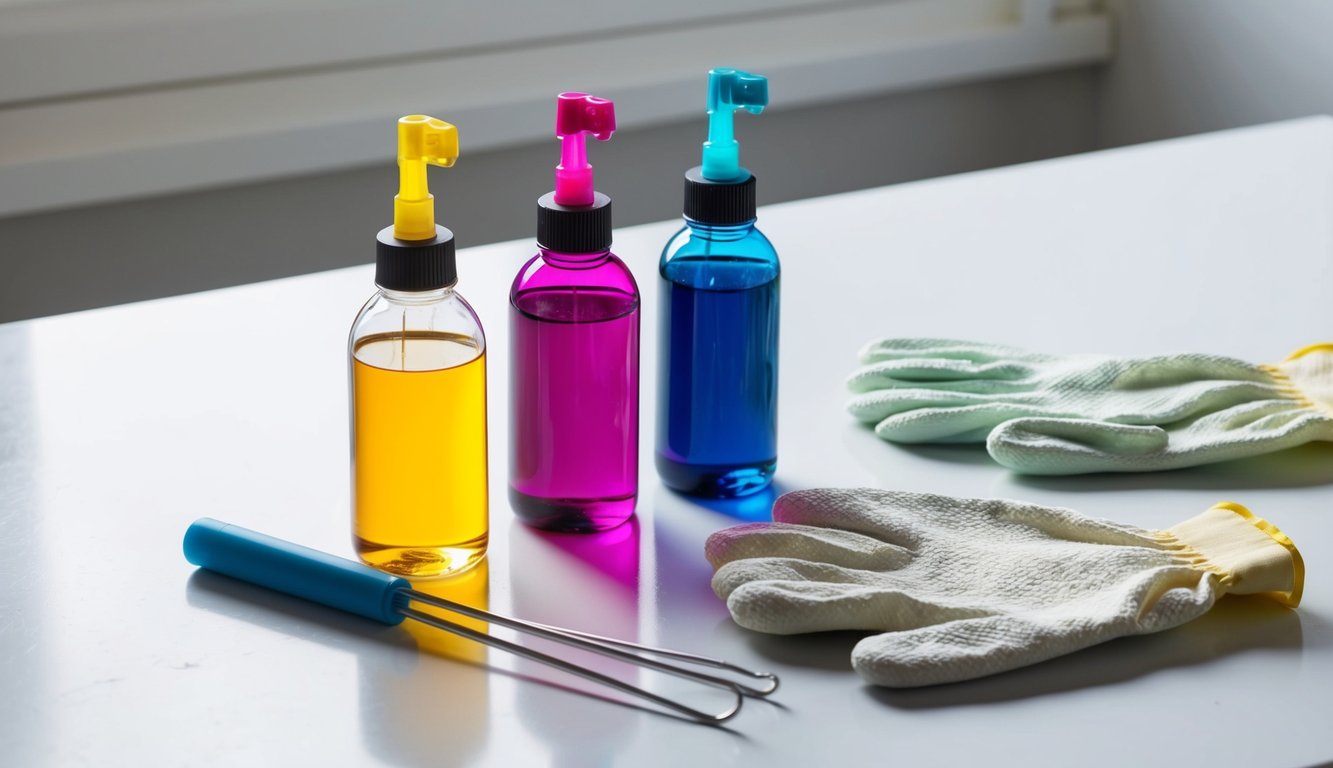

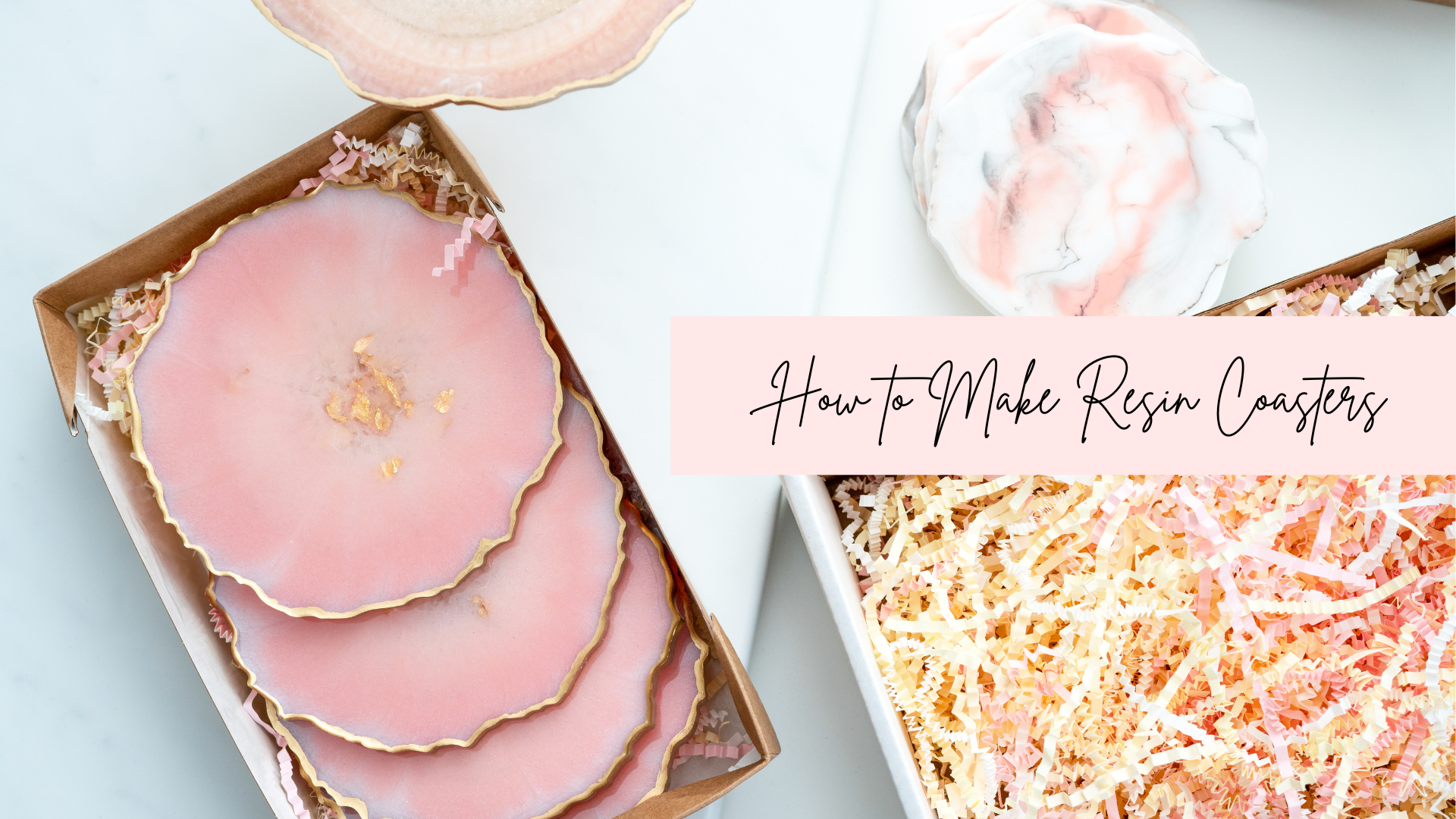
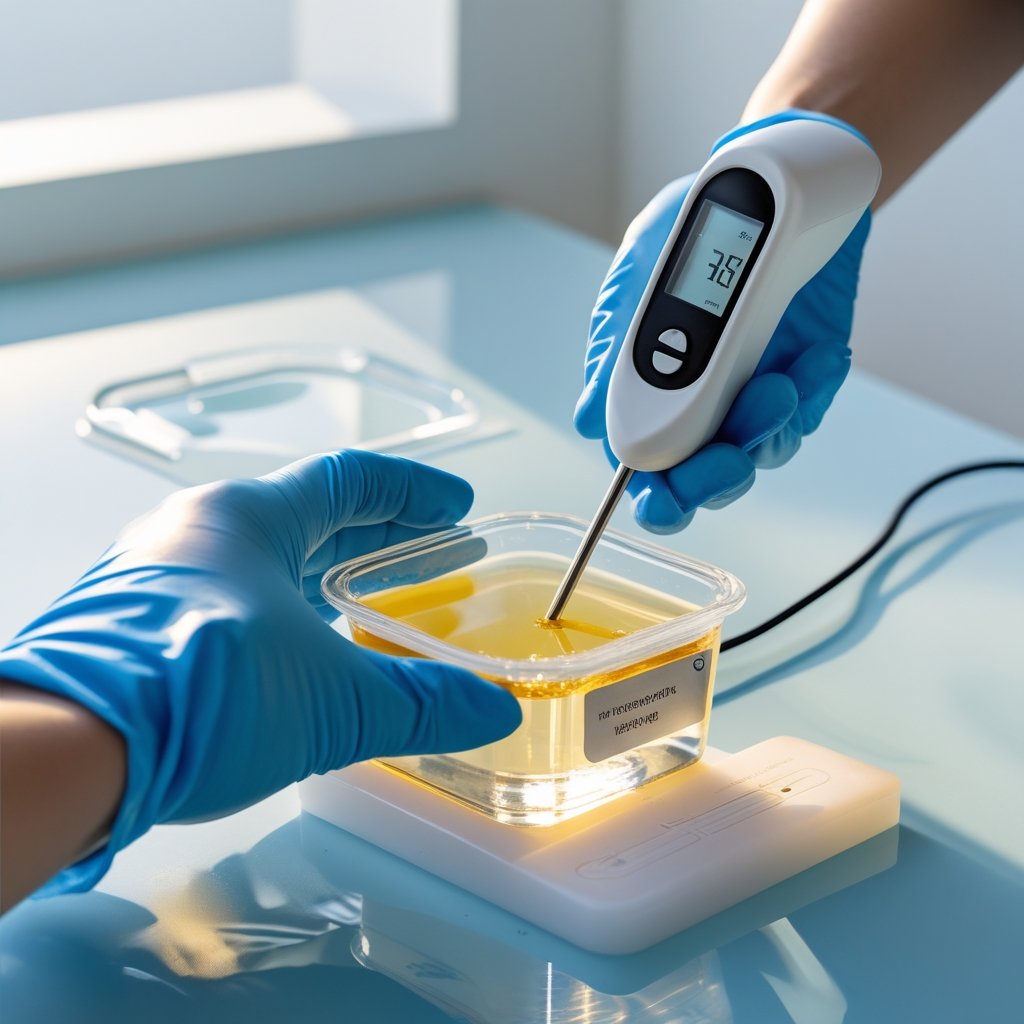
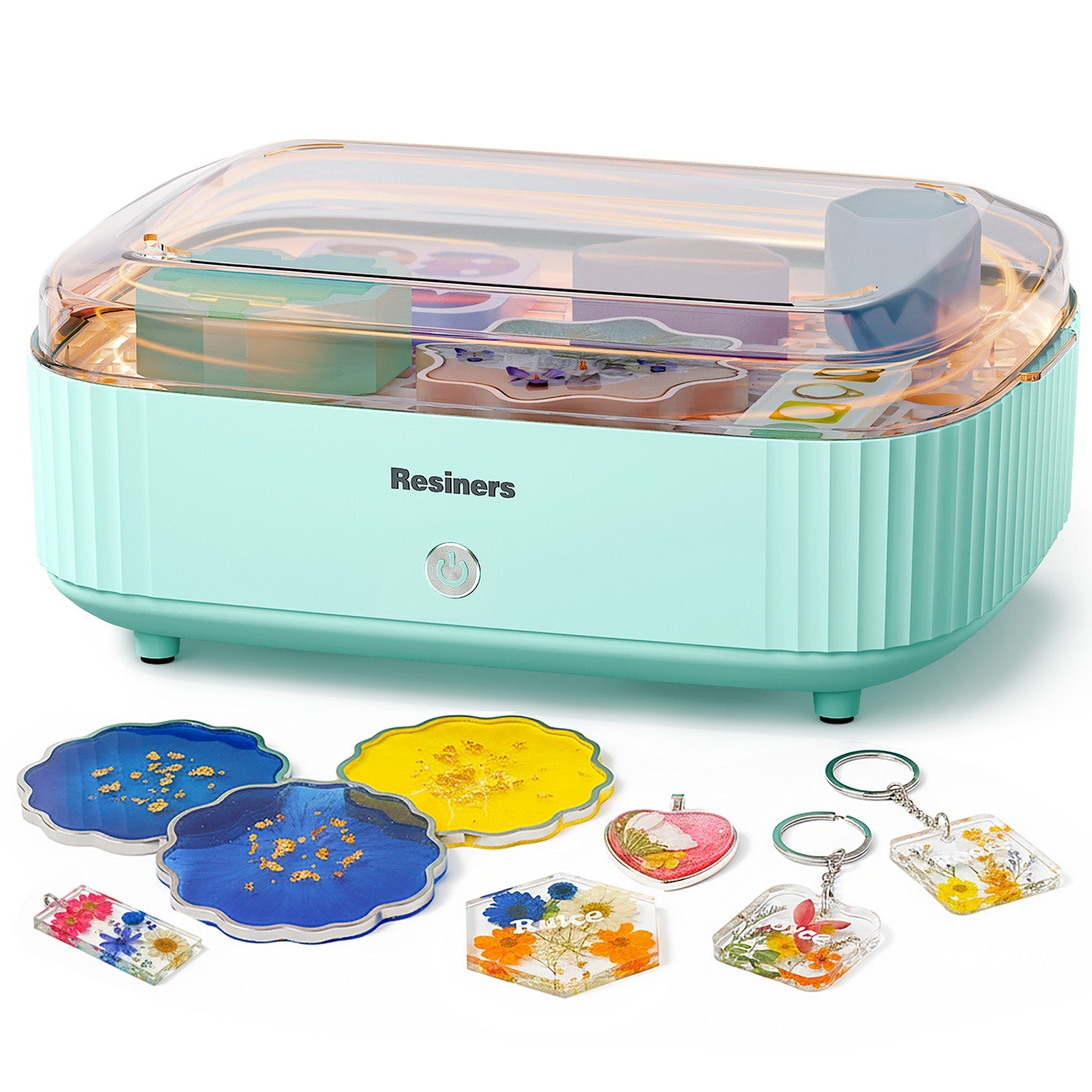
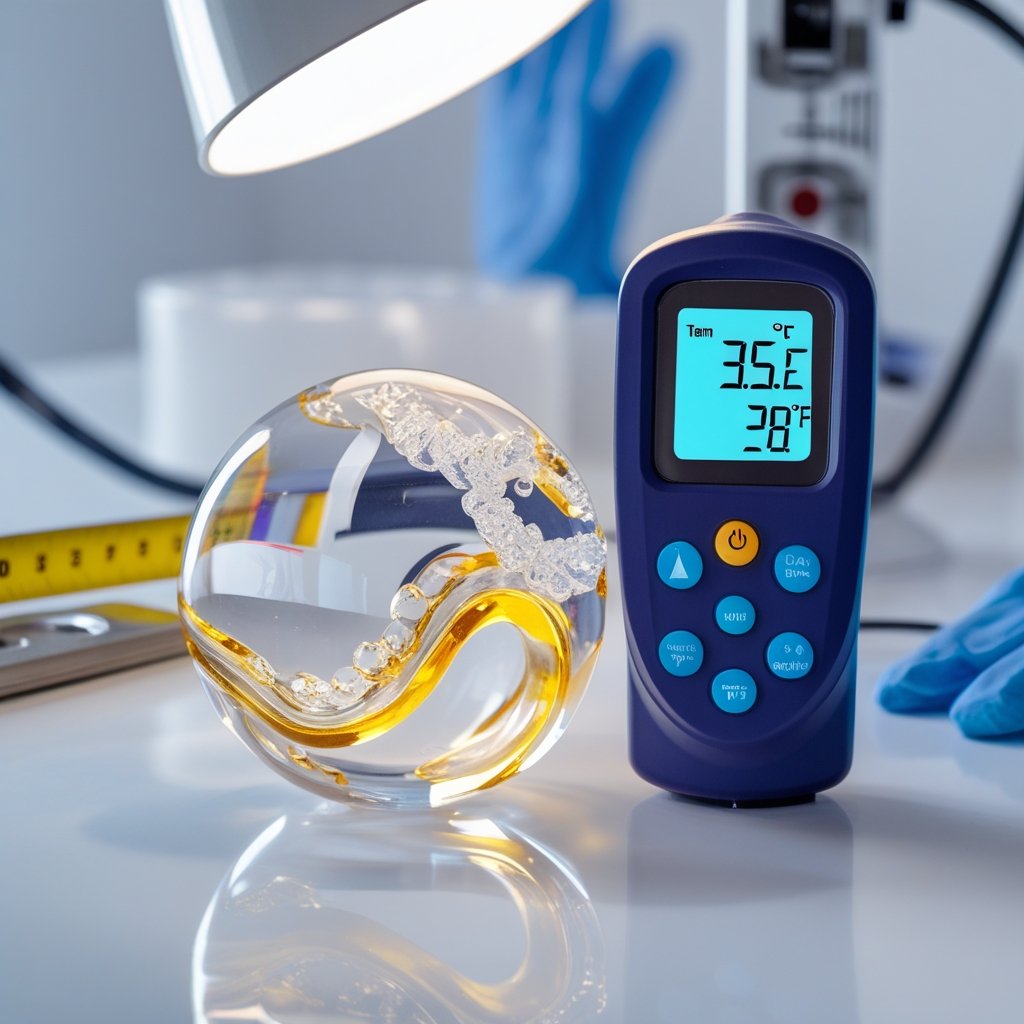

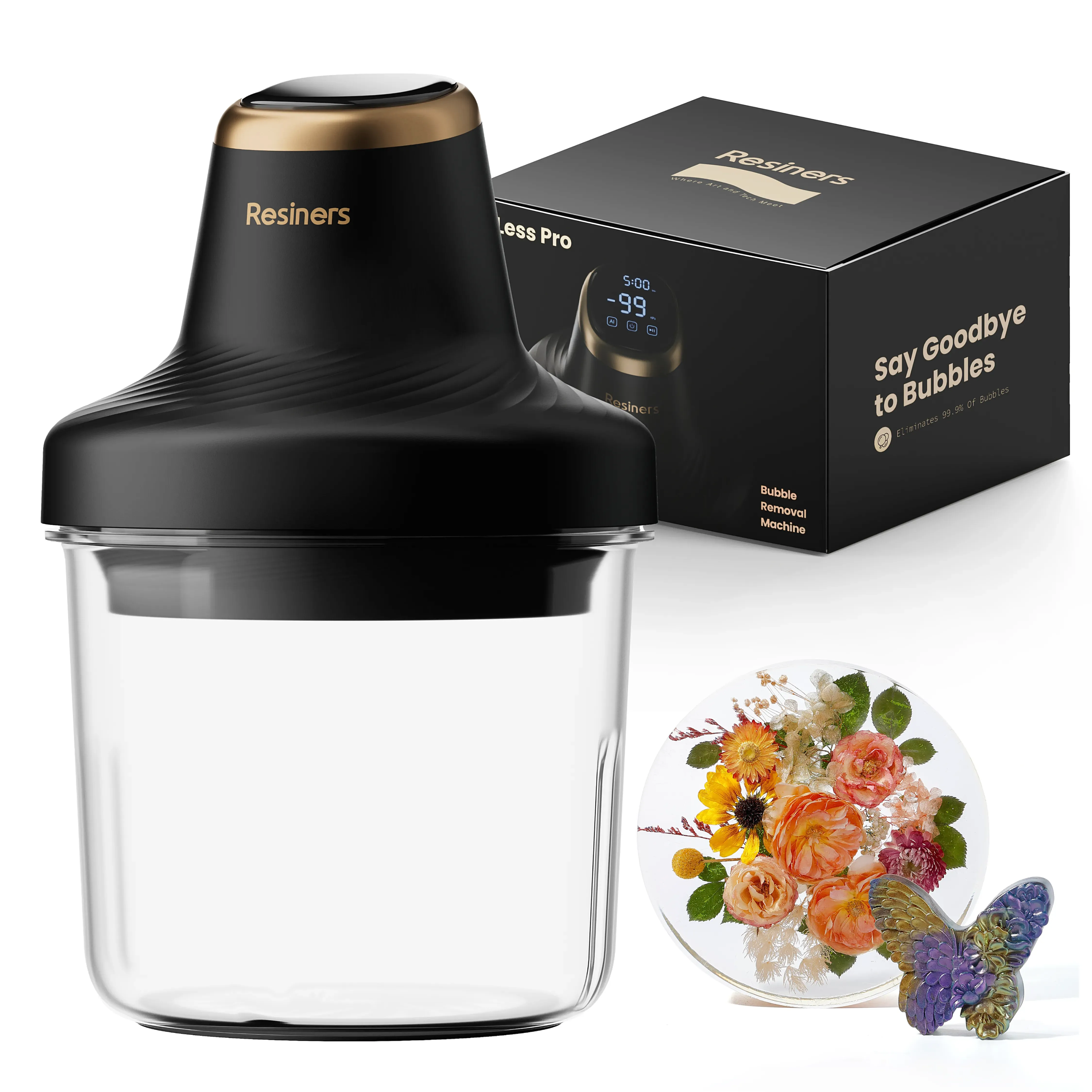


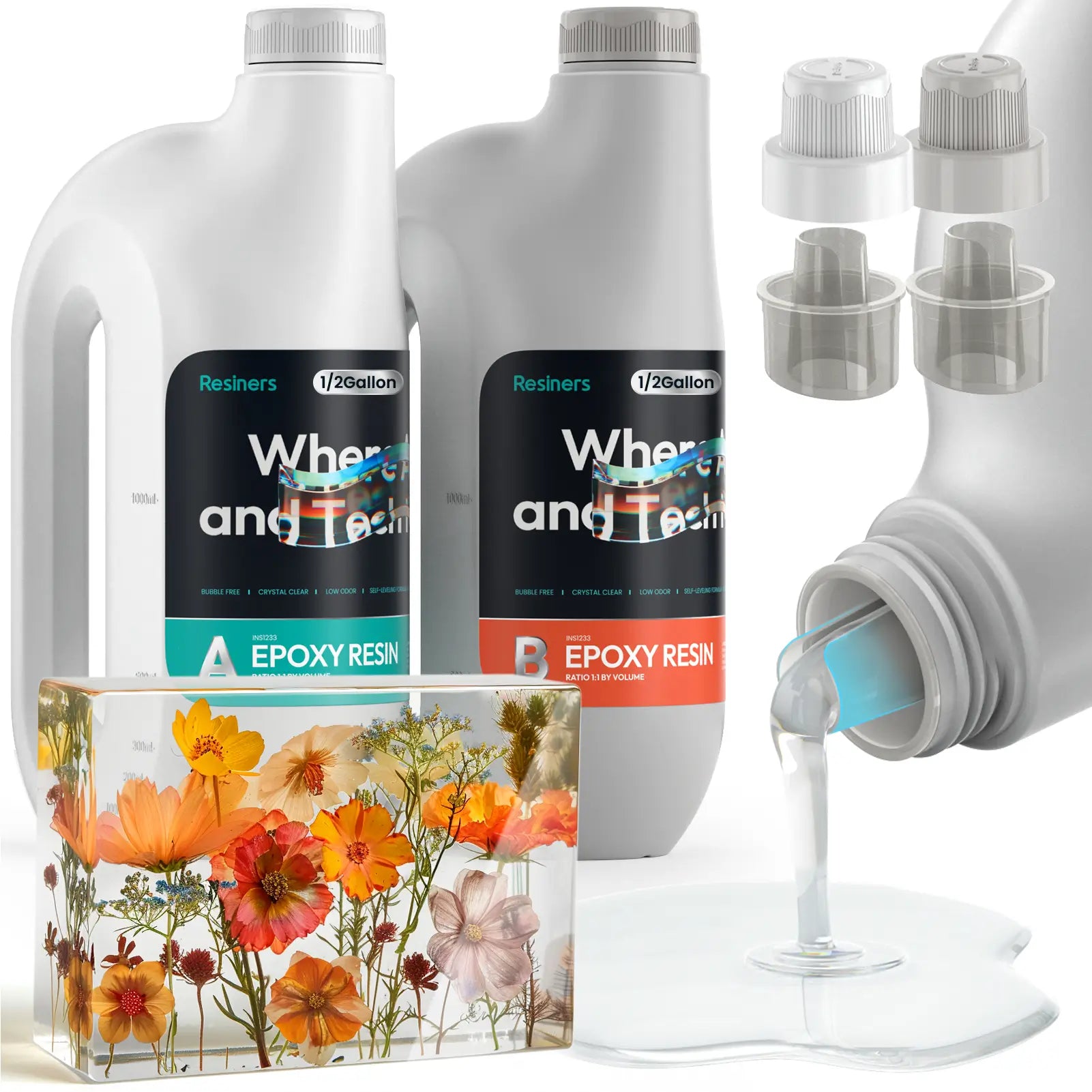
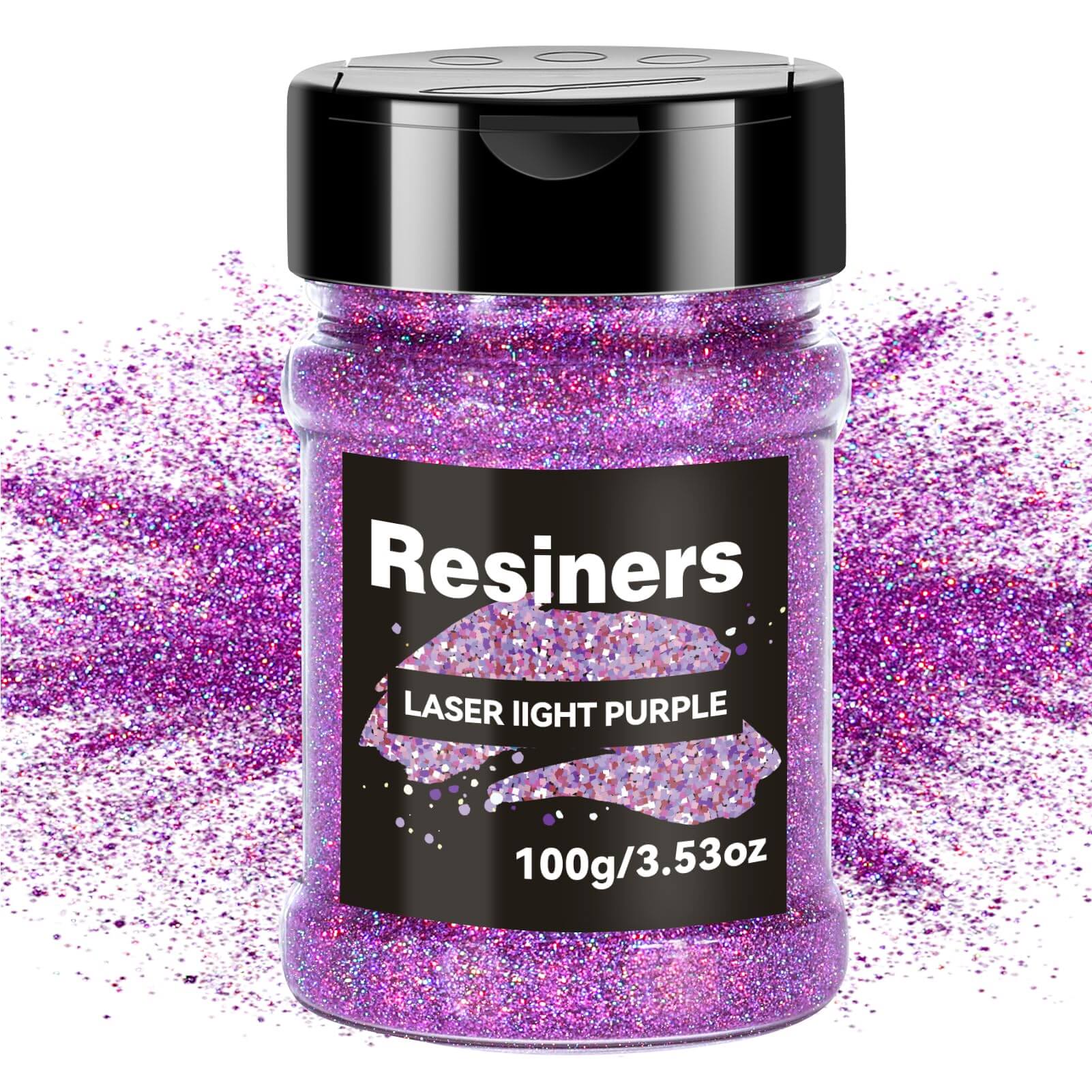
コメントを書く
このサイトはhCaptchaによって保護されており、hCaptchaプライバシーポリシーおよび利用規約が適用されます。